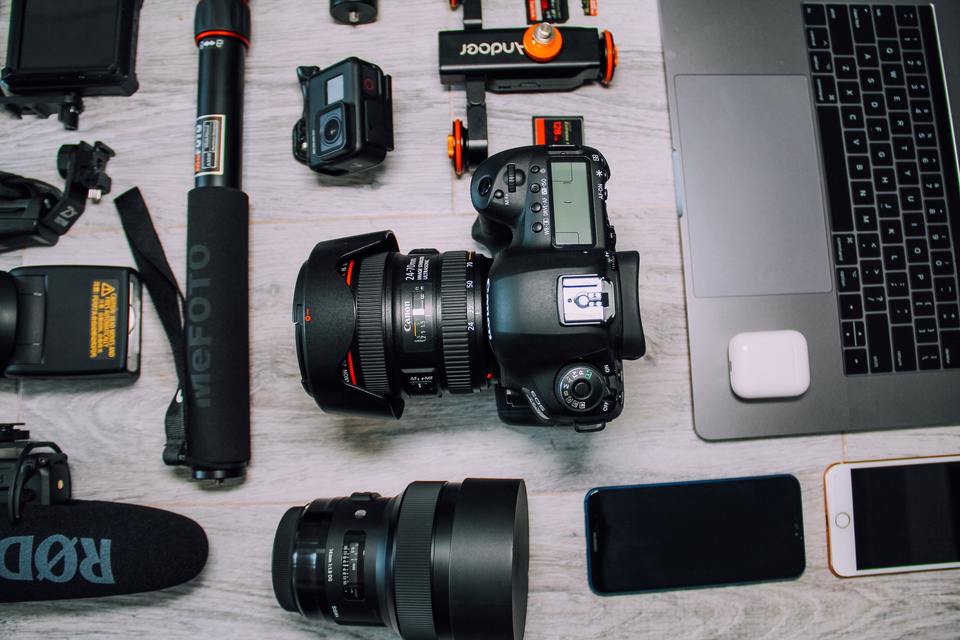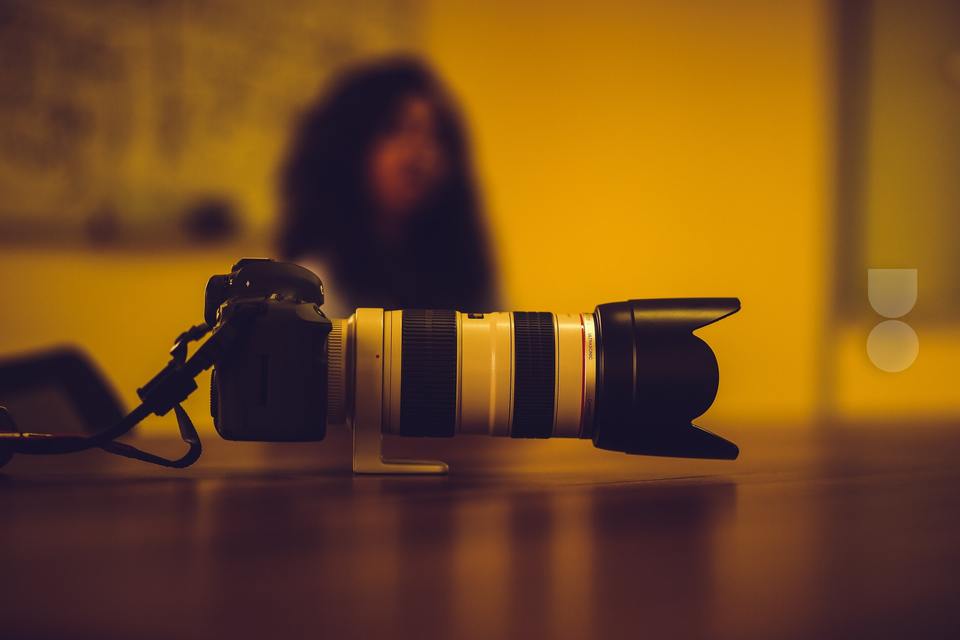
As an Amazon Associate we earn from qualifying purchases.
Shooting video clips can be challenging at times, especially when you're not sure what settings to use. If you're having trouble with exposure consistency, or you always end up taking new clips, I'm giving the complete guide to help improve your videography skills using the Canon 5D Mark III video settings.
The 5D Mark III is a compact camera that works with variable lighting conditions and different types of lenses. To give you a starting point, these are the general video settings you can use and adjust as you shoot using the Canon 5D Mark III.
Using the manual mode on the Canon EOS 5D Mark III provides you with creative control when setting the video exposure. Unlike priority shooting modes, manual mode helps you get a better understanding of the depth of field, lighting, and manual focus.
Aside from manual shooting mode, the menu in the Canon EOS 5D Mark III also lets you select a different setting depending on your situation.
To give you a better idea, try using Manual when taking a picture, then experiment with the various settings first before moving to full-length movies.

Getting the right exposure is one of the ways to make your shots look good. When taking a picture or a video, it's tempting to zoom in on elements or subjects as you shoot. However, you must make sure that the video exposure won't change whenever you zoom in or out.
Similar to when you need to use another lens with a different maximum aperture, you must prevent the shot from darkening due to less light reaching the sensor of the Canon 5D Mark III.
Choosing the white balance and the highlight tone priority is subjective, particularly since it depends on the overall look you want to achieve in a video.
Whether it's for a picture or video, you'll have to do color grading in post-process, so you need to make sure you choose the right color temperature first in the Canon 5D Mark III. Note that you would reduce the color date if you turn down the saturation.
Like in other kinds of
Like most EOS DSLRs, the Canon 5D Mark III has a temperature warning that notifies you if the sensor is becoming too hot due to long video recording. You must be aware of these automatic camera settings because they can help plan your shots.
The Canon 5D Mark III automatically turns off sharpening in a video shoot. Depending on the shot you like to achieve, you may adjust the lens to increase or decrease the sharpness in a video. Another option is to enhance sharpness in post-production.
As a general rule of thumb, you may record videos using the Canon 5D Mark III at 24 frames per second to produce an artistic or cinematic effect. In this way, you can get the best image quality and highest resolution for video footage.

Similar to choosing the file type for shooting a picture, it's also essential that you select the right movie file type for in-camera playback video.
The headphone jack of the EOS 5D Mark III enables you to put an external microphone for recording audio in a video exactly how it sounds in a given situation. In effect, the external microphone lets you know if you need to turn the volume up or down or if there's any distortion in the audio of the video.
A 50mm or prime lens is among the easiest lenses to use with this camera for videography because its f-stop lets in more light. You can also use a zoom lens, like a 24-105mm lens, to get multiple perspectives in a video from a single location. Learn more about what lens to pick with our guide.
Canon cameras contain IPB compression settings for videos that go along with the fps and resolution settings. The IPB is the compressed setting, which is ideal for keeping the file sizes down. Meanwhile, the ALL-I results in uncompressed video files for better quality and easier editing.
Unlike the 5D Mark II, the 5D Mark III has 300% higher max ISO, a larger image display, and longer battery life. These let you shoot more frames and obtain better video control.
A great place to start is to go to YouTube.com and look for "Canon 5D MK III video." Another good class on shooting real estate video is Grant Johnston's Learn to Shoot Real Estate Video class.
The Canon EOS 5D Mark III is among Canon's line of cameras that made it easier for people to take pictures and video footage using a single device. With practice, you can change the Canon 5D Mark III video settings depending on your needs and capture incredible movies even in low light conditions.
Bonus: Check out our guide to picking the best flash for a Canon 5D Mark III.

You didn't mention wha lens you were using.
The wider the lens the deeper (more area) depth of field you will have. I have shot with a 14mm and 17mm at f4 with perfectly acceptable results. In fact I hate shooting anything narrower than 5.6 becuase sensor dust is impossible to see in the field and is minimized when shooting wider apertures. Just focus 6-8 feet in front of the camera or at 2/3rds the depth of the room if its a larger space and everything should be well within acceptable range. If you are using a 24-50mm+ lens you will need to manually focus every single take precisely there is much less room for error as longer focal lengths on Full Frame cameras have very narrow depth of fields.
Another tip is to shoot at a faster frame rate. A lot of people are going to tell you to shoot at 24fps at 1/50th of a second for a "true film look". This is a pandoras box of opinions but there is zero argument, a faster frame rate will produce sharper frames when "motion" is introduced, like a walk through gimbal.
Also if its really cheap lens you can actual add some sharpening in post in Premier and (probaby i dont know for sure) Final Cut.
Go out to youtube and search. There is more info than can be absorbed out there.
Practice, practice, practice. It is amazing the different views you can generate of your own home as you apply what you learned on YouTube. Same with the Ronin-M and other accessories as you progress from footage looking like the village drunk on payday Friday, to mildly intoxicated, to actually sober. (HINT - wear good socks and shoot without shoes and a shuffle/gentle step (YouTube demo) to eliminate the bounce with each step.)
I have shot 5dmkIII video for a few years now. Recently switched to GH5, but am going back to Canon. If you can stand an extra 15ish minutes of post processing, you can shoot Magic Lantern RAW video. You will have more control over the files, and I almost always shoot 1/25th at 24fps.
We are making real estate videos here that will most likely be viewed on a mobile device (or potentially terrible screen), not full cinematic feature films. If you are going for the top of the 1% of homes, maybe a bit of rolling shutter makes a difference here or there, but I have shot 150k - 15M dollar homes with the same settings and haven't heard the first complaint.
To Michael's point above, I usually shoot on a slider, not a gimbal. You might want to get a faster frame rate for that, but when I use a gimbal, I am generally at the same settings.
As Larry says, practice, practice, practice. It makes a difference.
Good luck
Jed
Michael and Jed - thanks so much for sharing your specific settings. A couple more questions for you both - Do you shoot in shutter/aperture priority or manual? Do you try to avoid going above a certain ISO? Jed, you are correct about most videos being viewed on mobile, and I think what I've delivered to my clients will look fine on mobile devices, but still hoping to improve.
Larry - I like the socks idea, I don't think I've heard that one before. Good thing I'm usually by myself in the house!
I'm so excited to get my hands on the Canon 5D Mark III! I'm curious to see how the video settings compare to the previous model.
I'm so excited to get my hands on a Canon 5D Mark III! I'm curious to see what video settings you recommend for shooting video. Thanks for the blog post!